As you know, I'm rather enamored with what I'm hearing from the Audio Note (UK) CD 2.1x/II Level Two Red Book CD Player.

I said earlier that "The musicality of Audio Note (UK) digital is not a gimmick, it is for real, and I am very excited about it, because really, this is the first time in my own home that I've had something playing Red Book CDs that actually passes the test of musicality, and by doing so has both simultaneously upended what I thought about Red Book CDs, and made me happy while listening to the music on them."
I've been listening to a lot of CDs with the Audio Note (UK) CD 2.1x/II Level Two Red Book CD Player, and it continues to impress me with its musicality.
I have been talking to Peter Qvortrup about how he got such fine musical performance out of a CD player, and I thought you would like to know what Peter told me, so here you go, here's what Peter shared with me.
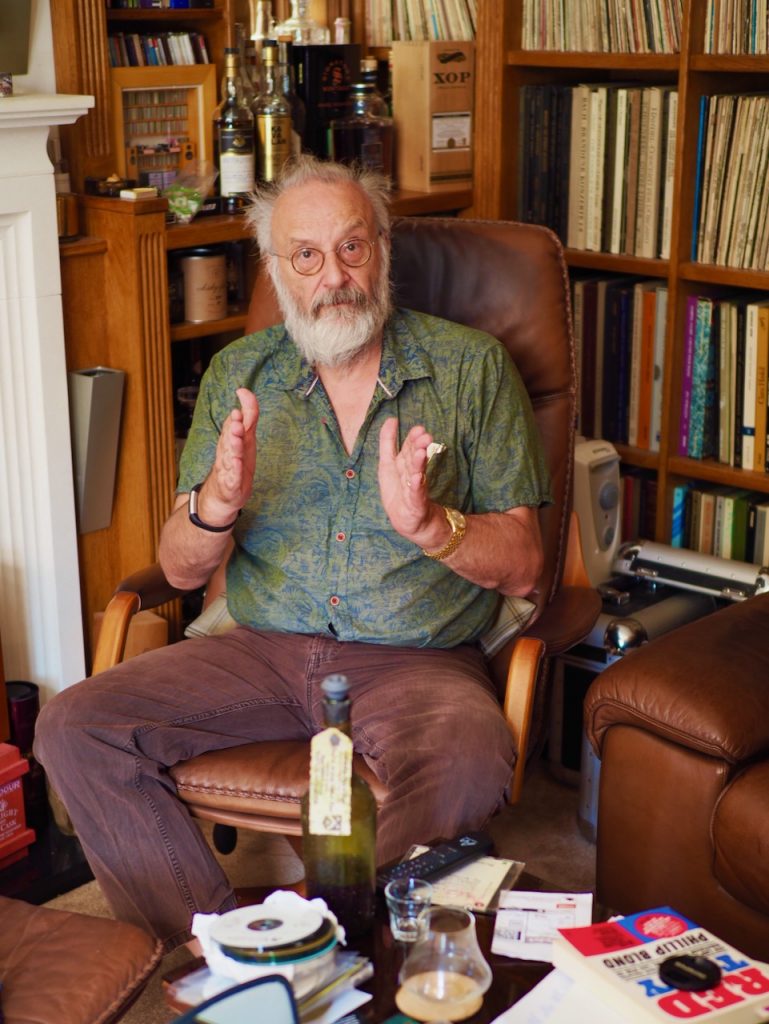
Peter Qvortrup:
“I resisted making anything digital for years, as to my ear everything digital I heard sounded absolutely terrible, so I spent several years studying the issues to try to get a handle on why the sound was so poor.
So what did I learn one might ask?
First of all, I realized that oversampling has a similar function in a digital circuit as negative feedback has in an amplifier, so the less there is the better the sound normally is, all other factors being equal.
Secondly, I decided that it might be worth using a transformer to do the current to voltage conversion after the DA conversion, so we did experiments with this to great effect sonically, after which we applied for a patent which was awarded in the UK, Europe, US, and elsewhere.
I always wondered what the signal would sound like without any correction (we used 8x oversampling in the first DAC we launched in late 1992 and the DAC3 was an instant hit with anyone who heard it), but I always wondered what the “raw” data would sound like without any filtering and correction.
I asked my engineer at the time, Guy Adams, about it and he was kind of dismissive of the idea, and did not think it would work (“all you will get is noise” kind of thing).
I persevered, and when a Dutch engineer friend of mine came over to see me in 1994 I asked him the same thing, and his reply was the usual one, “why would you want to do that, it probably won’t work”.
By then I had rehearsed a reply, “you just say that because you don’t know how to do it!”
“I bet you 500 pounds that you can’t get it working”. That settled it, and he took the bet.
On the following Monday, Andy Grove came to work as usual, and I told him about this, and his reaction was predictable, “Do I get 500 pounds if I do this as well?”
“Of course”, was my reply. Andy said he needed some books, which I bought for him.
A few months later my Dutch friend called me to say he had a working DAC3 with no oversampling, and at almost the same time Andy was ready, so we agreed to meet up in Brighton and listen to both.
Both were a considerable improvement on the 8x oversampling, although there were issues to be iron out.
I preferred the sound of Andy’s prototype, so that became the basis for all later designs. The first no-oversampling design, the DAC5, was released in mid-1995, over a year before Kurosawa published his now famous essay on no oversampling.
Of course the idea is not strictly speaking new, as all the early SONY CD players were 16Bit with no oversampling, but instead used steep analogue filters, that sounded pretty bad.
To summarize, the golden rule of audio design in our opinion is that it is impossible to improve the original signal as cut by the lathe or encoded on the CD, all we can do is to design equipment with circuits that alter the frequency-energy relationships as little as possible and this requires engineers to abandon their biases and design themselves out of the equation, and that my friends is not a simple task by any means!
Working out one’s own biases is quite difficult and takes a level of intellectual open mindedness that is very rare."
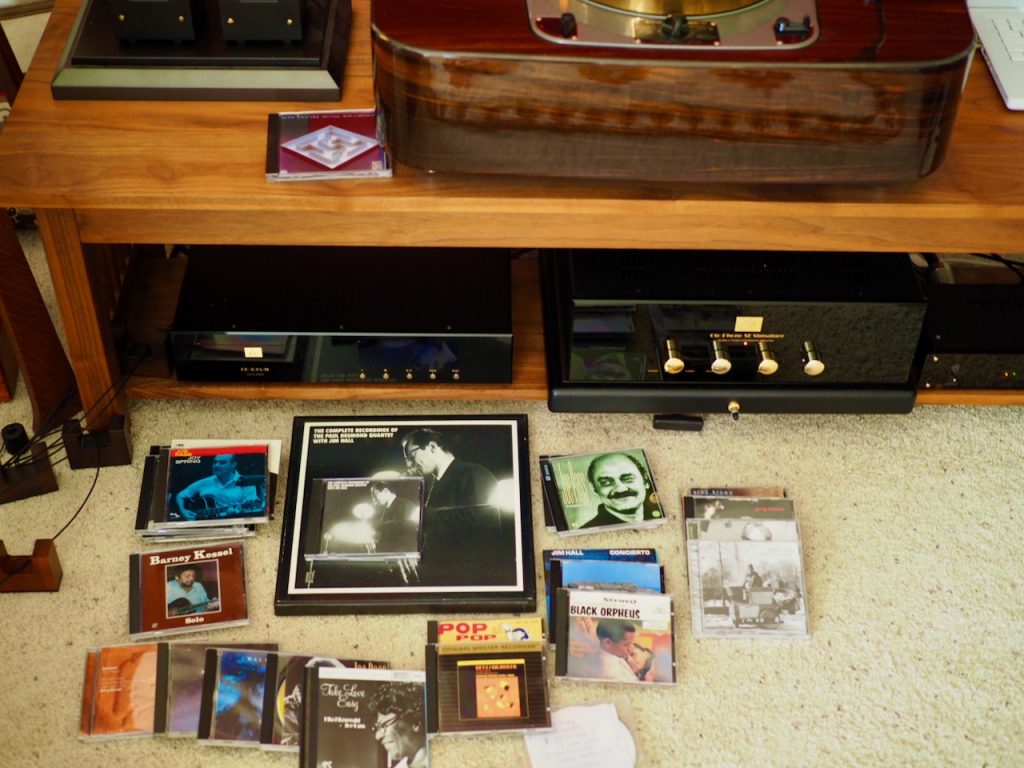
That was Peter' introductory comments to my questions about the musicality of the Audio Note (UK) CD 2.1x/II Level Two Red Book CD Player.
Peter also sent me something he had written up way back in September of 1998 for "sw1x AudioDesign" (link HERE), and Peter gave me permission to share it with you.
By Peter Qvortrup from 1998:
"While we all wait for the brave new world of DVD, with its many proposed (imagined??!) benefits to sound quality, Audio Note is introducing a highly innovative and unusual addition to existing digital converter technology.
The question is, will the one times oversampled D to A converter with no digital filter make a further contribution to 96kHz/24Bit technology or extend the life of the existing 16Bit system?? It seems to me that one of the main purposes of 24/96 is to reduce the effect of the steep digital filtering used in the original 16Bit/44.1KHz system, so why has no-one first tried to remove the digital filter to see whether it really did any damage or not.
A brief technical discussion follows below.
Digital Audio recording consists of measuring (sampling) the amplitude of the audio waveform at regular intervals and storing the measurement results in the form of binary data.
A digital to analogue converter generates an output which bears a direct relation to the digital data it is presented with, and hopefully if all goes well we retrieve the original analogue signal.
The sampling rate is the rate at which measurements are made and the resolution is the accuracy of these measurements. The greater the sampling rate, and the greater the resolution (number of “Bits”) the closer we theoretically get to the original, and infinite amounts of each would result in a perfect recording, this has been the limiting factor so far, because more resolution and higher sampling rate means more information which in turn requires greater storage space and thus greater cost.
The engineers who originally specified CD decided upon 44.1kHz sampling rate and 16 Bits (65536 discrete levels) of resolution were aiming at good recording time on the disc combined with acceptable cost within the technology available at the time (1982/83). This just about gets us to the generally accepted 20kHz upper hearing limit and gives acceptable dynamic range and distortion, but only just.
Due to the limited sampling rate of 44.1kHz the actual bandwidth of the system is limited to a theoretical maximum of 22.05kHz (half the sampling rate). If a digitally recorded signal is played back above the high frequency limit there is a lot of signal related noise which is generally considered to be undesirable. In fact, if you observe a 16Bit 44.1kHz encoded signal which has been directly converted by a D to A converter without filtering it looks a real mess. The current wisdom is to use a digital filter which interpolates the 16Bit/44.1kHz signal to a higher sampling rate and to a seemingly higher resolution. Commonly the interpolation is 8 times oversampling (to 352.8 kHz) and to 18 or 20 Bits of resolution, no information is added, the filter mathematically joins the “dots”. Then after the interpolated signal has been converted to analogue an analogue filter is used to put the final polish on the signal.
As the theoretical maximum frequency limit is 22.05kHz and the required bandwidth is 20kHz the digital filter has to cut off very very quickly. In fact the popularity of the digital filter today is entirely due to the impossibility of designing an analogue filter which can roll off so fast, and without phase distortion and time related problems. The digital filter uses a mathematical function called a sync function which gives the required “brick-wall” roll-off and with no theoretical phase distortion.
The sync function is an impulse which starts at time Zero and ripples off infinitely into the future, and the past!! Of course this is impossible in reality and the filter uses a part of the function and feeds the data into one end. Even though the filter only uses a small part of the sync function it must still be large enough to be effective at filtering and this means that it is usually several milliseconds long, regardless of the duration of the signal itself.
At Audio Note we have long pondered the question of how much damage the signal suffers at the hands of this filter function and the unavoidable time smearing it introduces. To give you an example, if an impulse lasting only one sample is fed into a digital filter, it gets smeared out into a ringing signal several milliseconds long, hardly supporting claims of accurate reproduction, or as we say here at Audio Note; time waits for no-one, not even the “perfect” digital medium. Time displacement is the greatest cause of audible anomalies in audio reproduction and always has been.
Whilst we are not alone in questioning the effects of the siny function and the digital filtering universally used in all CD-players and D to A converters, we are the only manufacturer unconventional enough to have grasped the nettle properly and removed the digital filter altogether, in an attempt to answer the central question; “how else do you establish with any accuracy exactly what the digital filter actually does to the signal and is there an alternative method of filtering that would preserve the signal better??”
Ask yourself why Audio Note is the only company to take the natural consequence of the above question, why has none of our esteemed competition, who have claimed numerous advances in digital technology over the past few years, not taken this logical step??
After much trial and error we found a way of removing the digital filter and incorporating a carefully designed analogue filter after the D to A conversion. Needless to say, this goes so completely against the grain of all current opinion because a lot of the spurious signals above 20kHz are still present in the output of the converter after the analogue filtering. The filter is a 3rd order design with a silver wired inductor and silver capacitors and is so designed to slowly attenuate the higher harmonics in a natural way, preserving as much of the musical waveform as possible, each filter is dynamically matched to within 0.5dB of its partner in the other channel across the full frequency spectrum, to achieve best possible channel balance.
Rather than use an off the shelf voltage regulator chip for the low voltage digital and analogue power supplies for the DAC we designed a unique discrete shunt regulator circuit, and use only the finest components throughout. In fact the DAC 5 power supplies take up more than 2/3rds of the substantial chassis. After the signal leaves the filter it is passed to a valve output stage, similar to that used in the M5 pre-amplifier, and is transformer coupled to the output, allowing both balanced and single-ended operation.
So how does the Direct Line DAC 5 converter with no digital filter and one-times oversampled D to A converter sound??
Let me first give you some background to what I believe matters in music reproduction and how I have arrived at the evaluation criteria we use at Audio Note.
It is no great secret that ever since Digital Audio was introduced in 1983, I have seriously questioned the validity of the claims that the technology would deliver the “Perfect Sound Forever” that launched the technology, I, and many others with me, found analog reproduction far more “real”, satisfying and authentic, not to mention less fatiguing.
The main criterion I have always used when evaluating any hi-fi system or component is that when playing different pieces of software (whether LP or CD) the better system or component is the one that individualizes the sound from each record the most, or in other words makes you sense each recording as a different and individual musical “event”.
This evaluation system is based on a fundamental analysis of recording in all its forms that concludes that all we really know about recordings, is that they must sound different from each other, the conclusion is based on the indisputable fact that each piece of software was done at a different time in a different location, with different microphones, cables, mixers, tape recorders and they were recorded by different people to any other recording, furthermore the software was manufactured by different cutting and pressing machinery at different plants and as a result must have an individual character or “signature” uniquely its own.
I call this method of differentiation “Comparison by Contrast” and with this tool in hand (or should I say ear?) I have spent many years searching out the “better”, more accurate (you will notice that the term used is more accurate, not accurate in its absolute sense, because total accuracy does not exist in recording or music reproduction, it is an unachievable goal, that will never be a reality, no matter how much the marketing men of the hi-fi industry would like you to believe it is) audio components and technologies in a largely selfish quest to improve the reproduction of my own record collection.
I made this pursuit my livelihood in 1977, when I left my career as a broker with a large multinational shipping company.
Back to the main subject, by the criteria outlined above, CD fails miserably compared against even quite cheap analog component hi-fi, and I have always thought that this failing was inherent in the medium itself, i.e., the fact that the musical signal is broken down into little “bits”, with poor resolution at low levels, which is after all the entry point of the musical signal (it is often forgotten that music starts from silence, not from somewhere up the amplitude scale, the assumption is often made that what we hear at the beginning of a note is what was recorded and the words “I hear more detail” assumes that we somehow know what is supposed to be there, which we certainly do not, what the reviewer should perhaps say is I hear more contrast!) it never seems to occur to anyone that the starting parts of the musical note might be missing.
The quiet background of the digital medium should therefore allow the best possible low level detail, but it does not, low level acoustic information like hall ambience is almost completely lost on most digital recordings (it is a little better on good analog recordings transferred to CD, indicating that the digital recording process is at least partly to blame), modern recording techniques do not help, as multi mic’ing, digital mixing and other technical gadgets used in the studio, “help” the recording engineers do their job speedily and within budget, a far cry from the simplicity, dedication and time that went into every recording made from the early acoustically recorded 78’s to the earliest LP’s) and this real acoustic information is replaced by a varyingly degree of hard and bright electronic echo, which makes most CD listening fatiguing, unless of course the system used tailors the high frequencies to suit, creating a “listenability” that comes at the price of severe loss of information at high frequencies, which may be preferable, but does nothing for the idea of a wide band system or signal, nor does it improve the listener’s ability to distinguish between the great and the merely good performance or interpretation.
While I owned Audio Innovations (sold out 1991) I spent years in denial and despite all the arguments in favor of the commercial considerations of what my company required I heard nothing from CD that encouraged much enthusiasm and since I prize my long term credibility more than just making money and as long as my favorite music was available on LP either new or second hand, I had no need for CD until the early 1990’s when a lot of interesting material (mainly historical piano recordings previously unavailable) suddenly appeared on CD-only releases.
I had already spent a lot of time looking at the subject of digital to analog conversion, without achieving any really substantial sonic improvements against the better converters already available, my approach was to conformist, as it turned out, as it accepted too much of the existing dogma and therefore too closely followed the already beaten track.
In 1990 I decided to test the use of an interface transformer between the converter chip and the analog filter, primarily in the belief that a better interface between the D-A converter chips output should yield sonic improvements but also because I felt that separating the digital and analog circuits ground planes ought to yield some improvements.
Early experiments showed promise, but the matching impedance and associated analogue filter configuration were more critical than first assumed, after two years later we finally got it right and Audio Note launched it’s first digital product, the DAC3 D-to-A converter with patents awarded in the UK, the USA, Germany, Australia and elsewhere.
Since then we have progressed with greatly refined components quality (DAC3 Signature), even more high quality components plus a power supply with a valve rectifier (the DAC4), and finally the best output stage and ultimate component quality (the DAC4 Signature), and whilst all of these measures achieved even better sound quality than the original DAC3 offered, the improved versions did nothing to dent the original product’s price/quality relationship to competing converters, after 6 years on the market it is no mean achievement for a digital product to stay at the top of the performance spectrum in its price range in a market where model life generally is measured in months rather than years.
The more I studied the fundamental equations that all digital theory is based on, the more convinced I became that the sync functions used in the digital filtering must have a far more damaging effect on the signal, than is generally accepted (or even considered).
The basis for my idea is that there has to be a price to pay in all attempts to improve, “correct” or manipulate the signal, regardless whether it is done in the digital or the analog domain, and I have always thought that the digital filters with their oversampling, re-clocking, noise shaping, jitter reduction and whatever else are no different in their fundamental properties to the corrective feedback systems employed in the analog domain, in that they also try to “stop” or reverse time, so their deteriorating effect on the sound must be similar.
In early 1995 work started on the no digital filter – 1 x oversampling D to A converter and when Andy Grove joined me in 1996, his contribution to the idea was a first prototype within weeks of joining, a great credit to his talent and ability.
Although the first version had a fair bit of the sampling frequency breaking through, even with this interference it was obvious to everyone that the sound had something fundamentally “right”, it was freer, had more presence, immediacy, delicacy and contrast than any digital product I had ever heard, there was obviously more good information in the digital data stream than previously thought, and it was clear that this converter had very serious sonic potential, so we persevered getting the interface transformer and filtering right, and here we are, nearly three years later introducing the finished product, the DAC5 Direct Line D/A Processor with 1 x oversampling and no digital filtering, re-clocking, noise shaping, jitter reduction or other such signal correction or manipulation.
Having listened to the final version of the DAC5 with its no-oversampling D to A conversion for nearly a year, I can say for the first time since my earliest experience with digital audio in late 1983 that digital has more to offer than I had ever imagined, because for the first time there is genuine contrasting quality between recordings with the DAC5, a fact which combined with an incredible sense of hall ambience, where instruments have greater presence, solidity and texture and a far more defined spatial position (provided this is what how it was recorded). An orchestra now has an organic quality where the musicians appear more like real people actually playing in real space, rather than as cardboard images in a sound deadened studio, the reproduction of stringed instruments has the sound and feel of real wood rather than the usual artificial and plasticky presentation of digital.
It may sound absurd, but the greatest beneficiaries of this vast improvement in the sound of my CD’s are my big collection of historical recordings of piano music, the distinct differences in style, touch, tempo, tone, intonation and sound of each of the great pianists from Sergei Rachmaninov to Joseph Levinne, and from Simon Barere to David Saperton is a true revelation, which has greatly contributed to my appreciation of the interpretative skill, dedication and pure musicianship of these great artists.
When all is said and done, however and despite the DAC 5’s great and almost analog qualities I still find my AN-TT Three Reference turntable with AN-1s/AN-Vz arm and IoGold cartridge excels with the best recordings, but now it is at least a contest between the two formats rather than a race between a Ferrari and a man wearing a pair of worn shoes!
The DAC 5 uses the Analog Devices AD1862NJ chip with as little in the signal path between it and the input chip as possible, the analog filtering has been done in such a way that the carrier frequency is inaudible, although it will show up on the oscilloscope in abundance (another example of the hard to grasp reality of measuring and its correlation to sonic reality)! We have experimented extensively with different filter configurations to find the one that passes an amount of breakthrough that does not disturb the ear without affecting the quality of sound more than necessary.
The DAC 5 has facility for 96KHz DVD technology, as well as the conventional 44.1 and 48KHz, it has high B C-core output transformers, with a 600Ohm balanced output using a professional Lemo connector (we can provide the silver cables with the Lemo plug for this) as well as a standard unbalanced RCA output.
There will be no patent applications or copy rights filed on this revolutionary idea, because that would limit its wider use by other manufacturers, to the detriment of the reproduction of music, instead we are offering this concept to you all, and this includes any of our competitors, all we ask is that you remember who thought of it and executed it first.
The DAC 5 is not cheap at £ 18,500.00. Its component, power supply, and transformer quality is far too expensive and elaborate for that, but go and give it a listen anyway, even if it is out of your price range, because the improvement it represents is nothing short of a digital revolution and you can rest assured that we shall move this advance in technology down in price as quickly as possible, so after 6 years most of our DAC-range (from the DAC3 upwards) will be upgraded to 1 x oversampling and 96KHz technology, to take us through at least another 6 years, which is in line with our stated aim to do our homework thoroughly and properly and only release products that have longevity built in."
Many thanks to Peter for sharing his approach to digital with us.
Darko Greguras of Audio Note UK
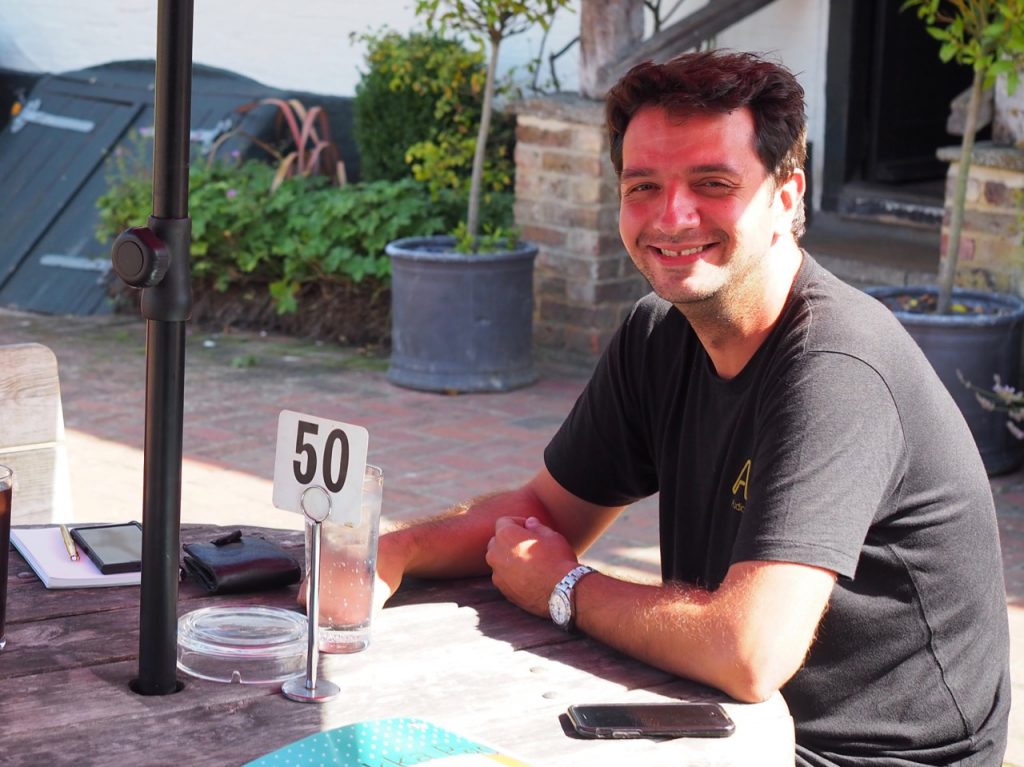
Darko Greguras of Audio Note UK
In a second part of this discussion, Darko Greguras is going to weigh-in and tell us more about achieving musical digital sound.
Darko told me, "I think Peter's part is great. I'll write about our digital products, particularly the lower-end like a CD2.1X, and I'll explain a bit how we do it, how we extract the music, the flow, that sort of rightness which is always present in all our products, starting from Level Zero."
Darko also mentioned he would also like to talk about the "discrete DAC project", his first project for Audio Note (UK), and an exotic one.
Of course I said, "Yes, please!" Here's just a snippet about that topic before Darko dives deeper into the subject in a future post.
The Discrete DAC Project
Darko told me, "This is the DAC calculated, built complete point-to-point by hand, with all the resistors carefully measured and matched."
The first generation DAC is in the photo below.
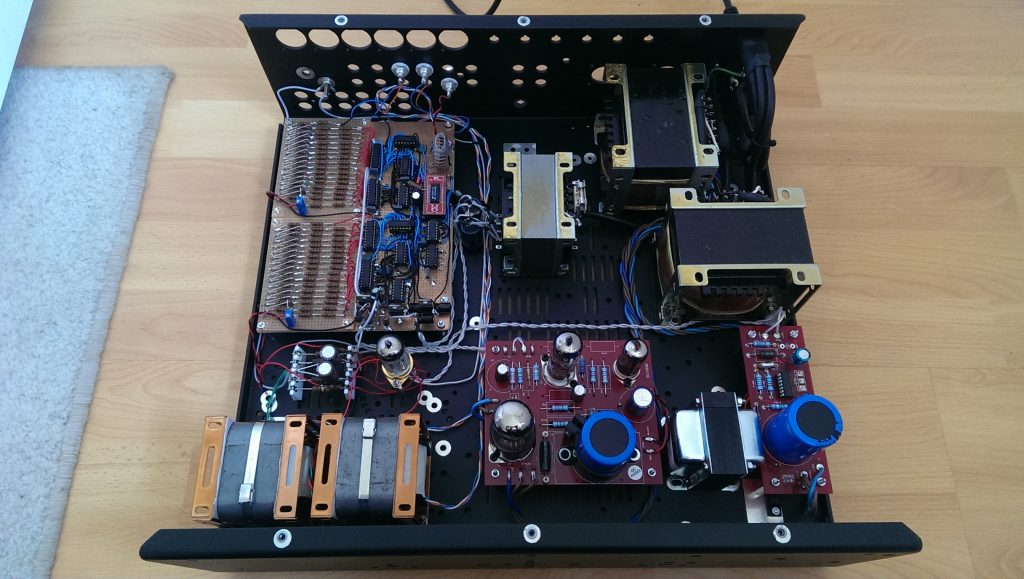
The resistors used in the design.
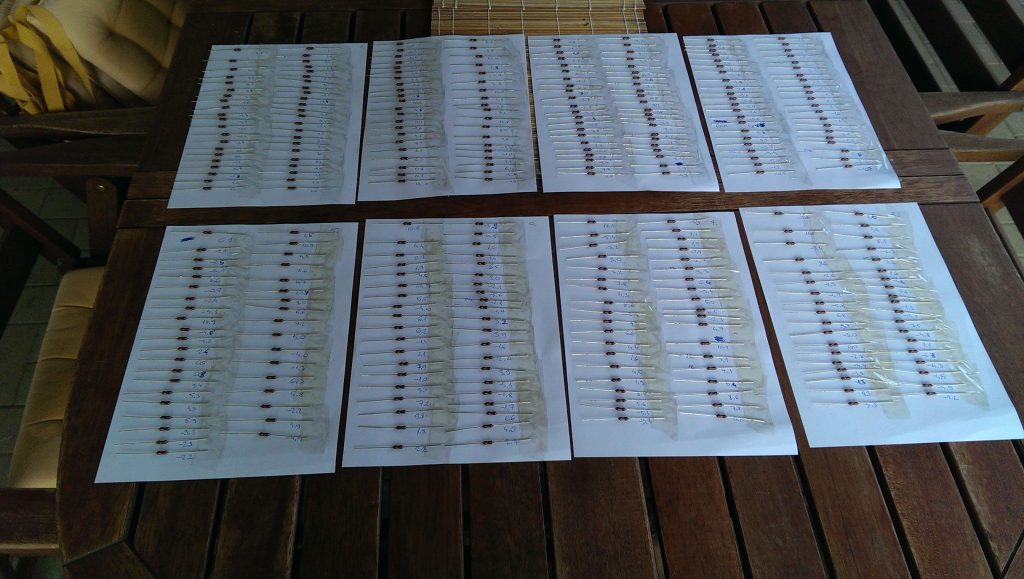
Here's a photo from Darko of the second generation of the design (below).
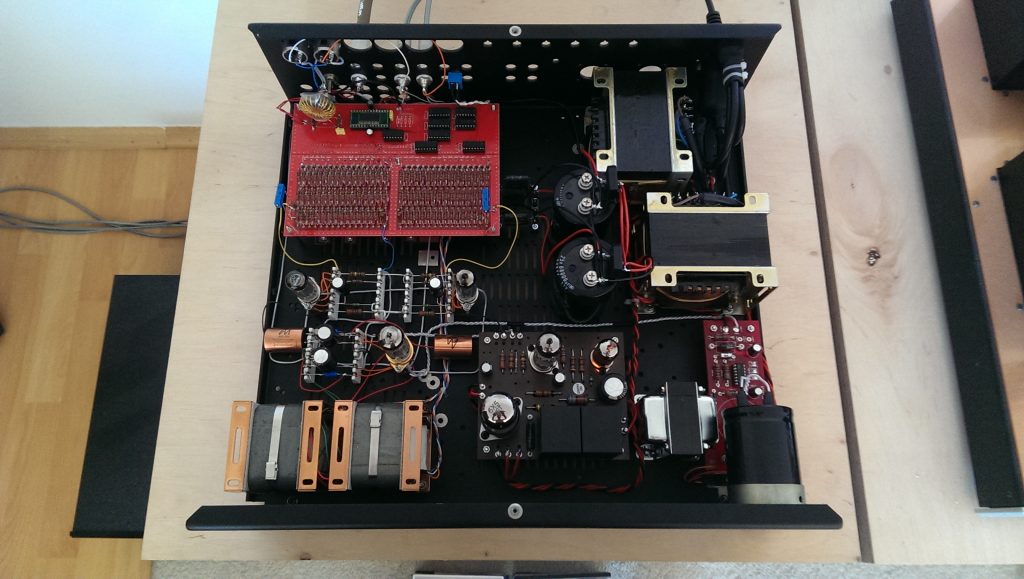
With this design, Darko says, "We can talk down to the level of a sound of a gate, logic families, a width of a track, etc., and there are not many manufacturers that have looked into the depths as we have."
"This is the latest one, which is full, fat, Class A, the first discrete DAC with I/V transformers, valve buffer, and a clever FPGA concept to use feed-forward correction with 1% resistors - in order to get LSB below 1/65535." Photo below.
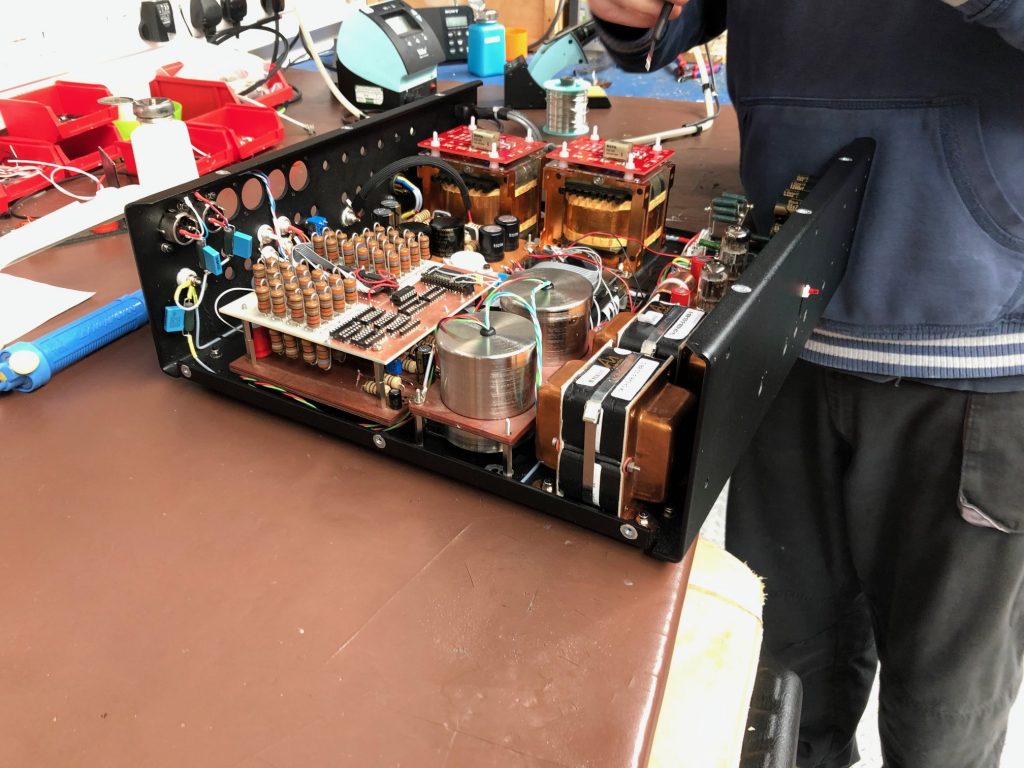
So with that tempting intro from Darko, I am really excited to hear the rest of what he has to say about digital goings-on at Audio Note (UK).
So, my take away from what Peter and Darko shared with me is this:
There are no gimmicks associated with the extraordinary musicality and sonic performance of the Audio Note (UK) digital products.
Rather, the Audio Note (UK) approach is the direct opposite of a gimmick, it is instead a stripping down to the most basic elements of digital, to make the most of the available signal without altering it in a damaging fashion. Then from first principles, build the best components possible to provide maximum musicality and sonic performance along each step of the way in the design of a digital product.
I would like to thank Peter Qvortrup and Darko Greguras of Audio Note (UK) for taking time out of their busy schedules to tell us a little about their approach to digital.
In the next installment on this topic Darko is going to tell us a lot more, and I can't wait to hear what he has to say!
Stay safe & well out there in these perilous pandemic times, and as always, thanks for stopping by, and may the tone be with you!





























